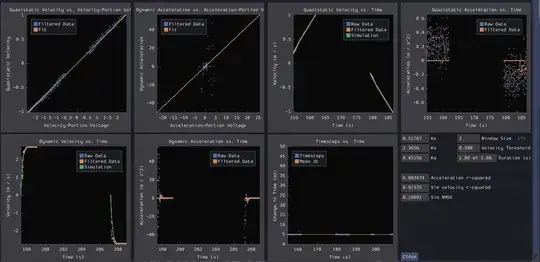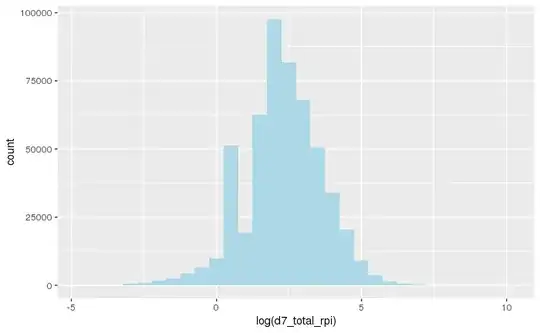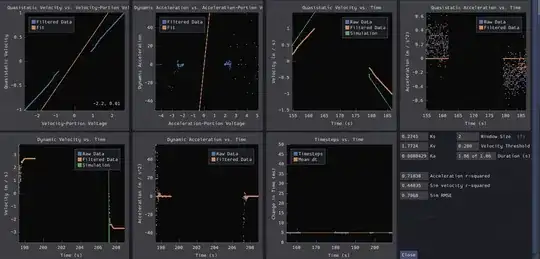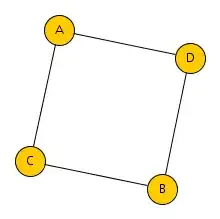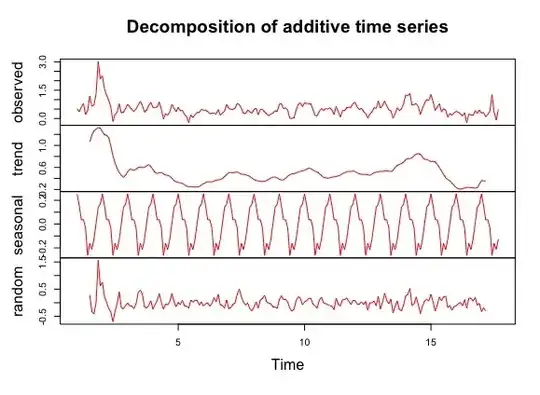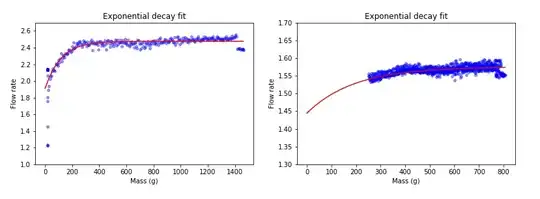Say we have a permanent-magnet DC motor that roughly obeys the system equation $\ddot{x}(t) = \alpha \dot{x}(t) + \beta u(t) + \gamma$, where $x(t)$ is the displacement of the rotor, and $u(t)$ the applied voltage, at time $t$.
Say we wish to determine the values of $\alpha$, $\beta$, and $\gamma$ experimentally. If we can only directly measure $x$, not $\dot{x}$ or $\ddot{x}$, how should we go about estimating these parameters from a set of time-series measurements of $u$ and $x$?
One naive approach is to compute the derivatives through some central finite difference scheme, and then perform an OLS regression - but it is unobvious how the derivative calculation interacts with the regression. Additionally, I have found in practice that this suffers from a significant amount of regression dilution if the test is allowed to run too long at steady-state (the derivatives vanish here, and so all that's left is the noise).
Is there any more "complete" method for analyzing systems like this that handles the differentiation as part of the construction of the regression model? Is there a good theory of correlations between derivatives of time-series data?
Update: I figured I'd share some actual plots to compare some of the methods that have been suggested. In the time-domain plots below, the green line represents the path of a simulated motor that has been stepped along with the characterization constants determined from the regression. Note that the constants here are presented in slightly different form - the presented parameters match the "feedforward equation" form:
$u(t) = K_a \ddot{x}(t) + K_v \dot{x}(t) + K_s \text{sgn}(\dot{x}(t))$
Strategy 1: Central finite difference followed by direct regression of acceleration against other variables:
Strategy 2: Central finite difference followed by direction regression of next velocity from previous velocity (slightly different UI - this is from an old version of the tool):
Strategy 3: "Accumulated" formulation - regression of the next position against previous position and integrals of other terms:
Alas, for our test procedure this methodology seems more or less useless.
I have yet to successfully run a Fourier-domain analysis; I might give that a shot eventually, but it's substantially more of a chore to implement than the ones I've tried above.
